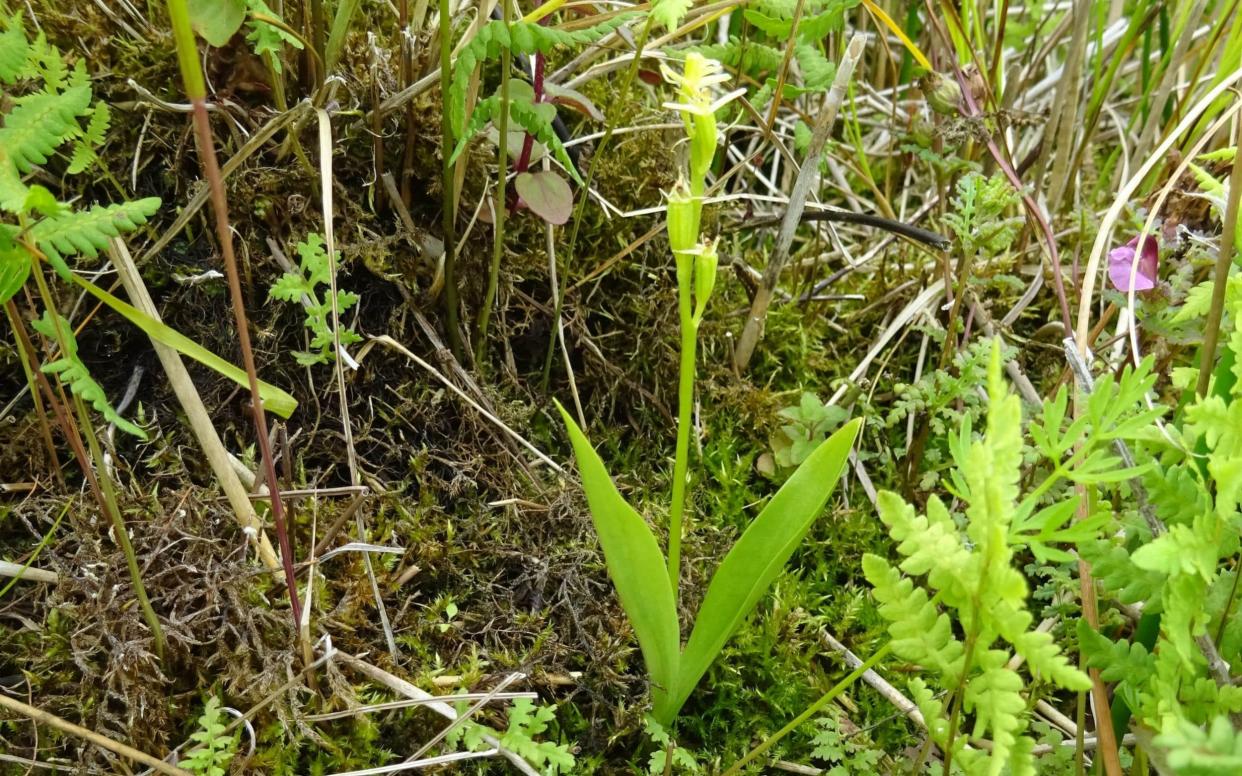Endangered orchid brought back from the brink after habitat was killed off by rise of the car

An orchid which almost died out because of the rise of the car has been brought back from the brink after careful tending by conservationists.
The fen orchid is one of Europe's most endangered wildflowers and has now been limited to two areas of Britain, Kenfig sand dunes in south Wales and the fens of the Norfolk broads.
Numbers of the small plant with pale yellow blooms dwindled to less than 1,400 plants across the two areas as its habitat deteriorated.
But efforts to restore its dune and fen homes, sustained by long-term funding, have seen its fortunes turned around, and there are hopes it will soon be removed from the "red list" of Britain's most endangered species.
There are now 16,000 of the plants growing in the two sites and it is hoped they will be planted and tended across England.
The fens where they grow were previously actively managed for "marsh hay" for feed and bedding for horses in towns and cities, until the advent of the car, when land was drained for farming or became derelict and overgrown.
Tim Pankhurst, Plantlife's conservation manager for the East of England, said: "It's truly satisfying to see that years of painstaking work are paying off.
"The species has been saved and we have restored the beautiful places where the fen orchid now thrives to their former glory."
He said getting the habitat right for "flagship" species such as the fen orchid would have benefits across nature.
"The work we do on the individual species massively enhances our understanding of the places where they grow - if they work for difficult, iconic species, they're going to work for a huge range of other things," he said.
Fen orchids were once found in eight dune sites along the south Wales coast, but a lack of management meant the dunes became overgrown, with the bare sand disappearing under a mat of vegetation which suffocated the orchid.
It almost completely disappeared from the dunes, and numbers at the sole remaining site at Kenfig, south Wales, fell from 21,000 at the end of the 1980s to 400 in 2011.
Plantlife said it was early days for the reintroduction scheme but that there were encouraging signs the orchid could thrive in some of its former sites across England.
Plantlife worked with Natural England, RSPB, Norfolk and Suffolk wildlife trusts, Butterfly Conservation and the Broads Authority in England, and with Natural Resources Wales, Environment Wales, Million Ponds Project/Biffa Award and the Esmee Fairbairn Foundation in Wales.

 Yahoo News
Yahoo News 
